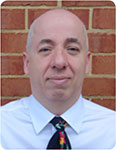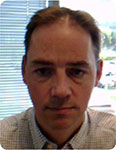Low-frequency seismic: the next revolution in resolution
Andrew Long A and Cyrille Reiser APGS
The APPEA Journal 54(1) 69-82 https://doi.org/10.1071/AJ13010
Published: 2014
Abstract
Ultra-low seismic frequencies less than about 7 Hz cannot be produced by conventional air gun arrays, for any configuration and for any towing depth. There is a profound difference between improving low-frequency recovery by removing source and receiver ghosts (achievable) and improving low-frequency injection on the source side (an unrealised dream).
If 1–7 Hz amplitudes could be usefully injected into the earth, it would be possible to facilitate much sharper seismic representation of geological contacts and internal features, and seismic inversion would yield robust and precise predictions of reservoir properties—without well control. The net result is fewer exploration and appraisal wells, greatly reduced exploration and development risks, and optimised recoverable reserves.
Furthermore, an emerging seismic pursuit known as full waveform inversion (FWI) makes the bold promise that raw seismic field gathers can be directly used to invert for the highest achievable velocity models, almost without any human intervention. These models will bypass the traditional lack of low-frequency information in band-limited seismic data, and facilitate the aforementioned ambition of seismic inversion without well control. FWI, however, is confronted by the paradox that ultra-low-frequency seismic gathers are the necessary input for stable results.
This paper describes new technologies that may enable the injection of strong 2–7 Hz amplitudes into the earth, and explains in simple terms how FWI can already be pursued as a robust complement to the prediction of accurate reservoir properties.
The low-frequency revolution is already here.

Andrew Long has a PhD in geology from the University of Western Australia (UWA), and has worked for various service companies and academia for a 20 year period. He is Chief Scientist for Geoscience & Engineering in PGS, having been employed by PGS since 1997. Member: Petroleum Exploration Society of Australia (PESA), Society of Economic Geologists (SEG), European Association of Geoscientists & Engineers (EAGE), Australian Society of Exploration Geophysicissts (ASEG) and South East Asia Petroleum Exploration Society (SEAPEX). andrew.long@pgs.com |

Cyrille Reiser has a Ph.D. in geology from Lyon’s Ecole Normale, and has specialized in reservoir characterisation for 15 years. He is Reservoir Characterisation Director for Reservoir Services in PGS, having been employed by PGS since 2008. Cyrille is a member of SEG, EAGE and Petroleum Exploration Society of Great Britain (PESGB). cyrille.reiser@pgs.com |


